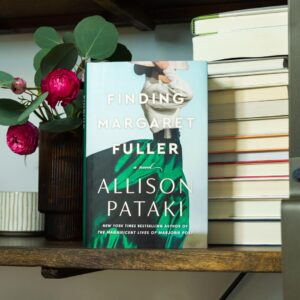The holidays have me feeling nostalgic. Now that Thanksgiving is behind us, we commence the full-fledged sprint toward Christmas. On this chilly December morning, as I sift through the barrage of “Cyber Monday” emails in my inbox, I am remembering one particular childhood memory that, to me, conjures the cozy glow of childhood Christmas traditions.
 Near my hometown in the Hudson Highlands, New York, there is a small museum built on the site of the former West Point Foundry. It’s a historical gem. This Foundry once produced products that helped spur America’s industrial growth through the eighteenth and nineteenth centuries – all sorts of goodies including locomotive trains, ironclad ships, and the Parrott Gun, a cannon credited with determining the outcome of the Civil War.
Near my hometown in the Hudson Highlands, New York, there is a small museum built on the site of the former West Point Foundry. It’s a historical gem. This Foundry once produced products that helped spur America’s industrial growth through the eighteenth and nineteenth centuries – all sorts of goodies including locomotive trains, ironclad ships, and the Parrott Gun, a cannon credited with determining the outcome of the Civil War.
Each December, the members of our community were invited to the Foundry Museum to sing Christmas carols, decorate ornaments, and drink hot chocolate. It was always a fantastic day. As kids, what we always gravitated toward was the museum’s one-room schoolhouse, preserved and furnished precisely as it would have been in the 1800’s. We kids, my siblings and our friends, always ended up in this room once the requisite “Rudolph the Red-Nosed Reindeer” had been sung and our weight in candy canes had been consumed. I find this odd; as kids, we could not wait for Winter Vacation to begin so that we might enjoy two weeks away from school, and yet, when gathering to celebrate Christmas, we always ended up in the old-fashioned schoolroom.
Something about the setting captivated our imaginations. I still remember the old wooden benches, the individualized chalkboards at each seat, and the “dunce cap” for anyone who proved too unruly. In that room we studied history without even realizing it. It was not just that we were playing school. It was that we were pretending to be children from centuries earlier. We were thinking of Little House on the Prairie, Little Women, and Anne of Green Gables. In our minds, we were pupils who would be returning to log cabins and farms after school. We were writing on scratchy graphite boards because notebooks, pens, and binders did not exist. Wal-Mart, the place where you bought such supplies, did not exist. We spoke in formal sentences because we felt that that was how the kids talked in “the olden times.”
I still think about that schoolroom and wonder what it must have been like to be a student in the days when cars and computers were not even yet imagined. And even more so, I think about those days spent with my family at the old Foundry museum. Everything about those memories feels cozy, cloaked in the warm halo of childhood Christmas celebrations. Thanks, Mom and Dad, for giving us those jungle gyms on which our imaginations could play.




